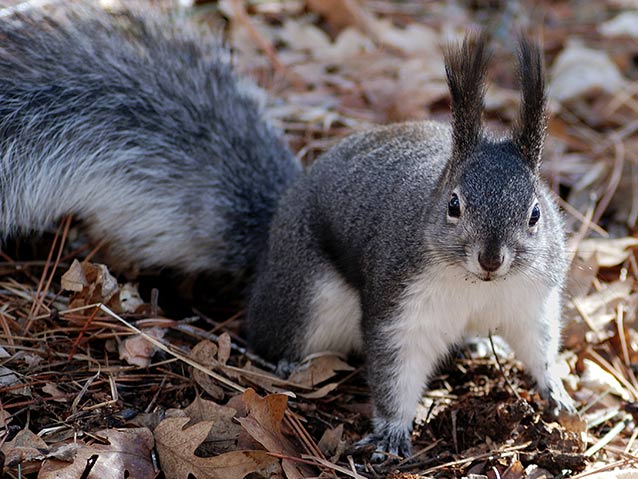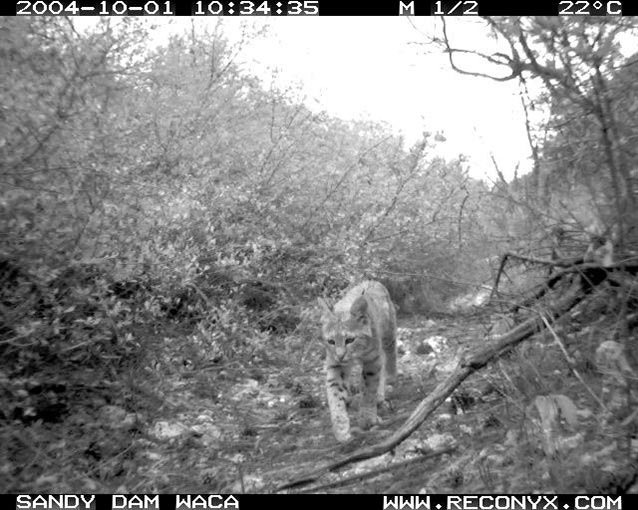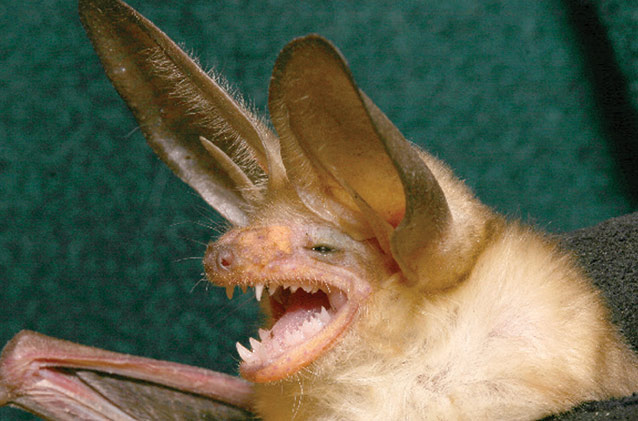Mammal inventories help to close the gap in our knowledge and understanding of some taxonomic groups on the Colorado Plateau.
Importance
An important job of the National Park Service (NPS) is to protect and maintain the biological diversity within our national parks. Park managers, planners, and scientists need basic information about the status of species that occur in parks in order to make resource management decisions, as well as to work effectively with other agencies, the scientific community, and the public for the long-term protection of park ecosystems. In 1998, the NPS Natural Resource Inventory & Monitoring (I&M) Program was created by congressional mandate to do provide this information.
One of the primary goals of the I&M program is to inventory the natural resources in parks to determine their nature and status. All parks with significant natural resources must complete a set of 12 basic natural resource inventories. Species occurrence and distribution is one of these core inventories, and it entails documenting the occurrence of at least 90 percent of the species of vascular plants and vertebrates estimated to occur in parks. This project summary describes the mammalian inventory project for the Southern Colorado Plateau Network (SCPN), which covers the following parks in two reports: Aztec Ruins NM (AZRU), Bandelier NM (BAND), Chaco Culture NHP (CHCU), El Malpais NM (ELMA), El Morro NM (ELMO), Petroglyph NM (PETR), Salinas Pueblo Missions NM (SAPU), Walnut Canyon NM (WACA), Wupatki NM (WUPA), and Yucca House NM (YUHO). This project was funded by the NPS I&M program and managed by SCPN.

NPS
Inventory Objectives
Natural resource inventories are extensive, point-in-time surveys that determine the location and/or condition of a biological resource, such as plants and animals, or of abiotic resources, such as air, water, soils, landforms, and climate. Inventories may involve both the compilation of existing information and the acquisition of new information that can include presence, class, distribution, and status.
This inventory project focused on documenting the occurrence of 90% of the mammalian species expected to occur at each park via field inventories and examination of existing records. Other objectives included describing the distribution and abundance of species of special concern (e.g., threatened and endangered species, exotics, and other species of special management interest), providing baseline information necessary for the development of a monitoring strategy, and assisting in the development of a coordinated network data management effort, so that biological resource information is accessible to resource managers, scientists, and the public.

U.S. Geological Survey
Management Applications
Serious gaps exist in our understanding of some taxonomic groups on the Colorado Plateau. In particular, relatively little is known about the status and distribution of bats, small mammals, reptiles (especially snakes), amphibians, endemic annual plants, and exotic plants. Good biological inventory data and reliable species lists are critical to understanding the natural resources in each of the network park units, and will provide useful information for a wide range of resource management issues.
During field inventories conducted from 2001–2003, 1038 mammals, representing 5 mammalian orders and 67 species, were captured or observed at AZRU, ELMO, PETR, SAPU, and YUHO. During field inventories conducted in 2003 and 2004, 2309 mammals, representing 5 mammalian orders and 75 species, were either captured or observed at BAND, CHCU, and ELMA. A total of 56 mammals were detected at WACA and WUPA over multiple years of monitoring, from 2000 through 2006.

Project Reports
Bogan, M. A., K. Geluso, S. Haymond, and E. W. Valdez. 2007. Mammal Inventories for Eight National Parks in the Southern Colorado Plateau Network. Natural Resource Technical Report NPS/SCPN/NRTR-2007/054. National Park Service, Fort Collins,Colorado.
Drost, C. 2009. Inventory of mammals at Walnut Canyon, Wupatki, and Sunset Crater National Monuments. Natural Resource Technical Report NPS/SCPN/NRTR—2009/278. National Park Service, Fort Collins, Colorado.
Prepared by Jean Palumbo, Southern Colorado Plateau Network Inventory and Monitoring Program, 2014.
Tags
- aztec ruins national monument
- bandelier national monument
- chaco culture national historical park
- el malpais national monument
- el morro national monument
- petroglyph national monument
- salinas pueblo missions national monument
- walnut canyon national monument
- wupatki national monument
- yucca house national monument
- swscience
- american southwest
- southern colorado plateau
- scpn
- project
- mammals
- inventory
- jmrlc
- natural resources
Last updated: January 12, 2023
